How to Turn an Ebike Battery into a Power Bank
If you own an ebike, chances are you have thought about ways to get more use out of the large battery pack attached to it. After all, modern lithium-ion packs contain impressive capacity measured in Amp Hours, often far more than the average portable power bank. This makes them attractive for off-grid use, camping, or as emergency backup for charging laptops, phones, and other devices. In this guide, we’ll break down everything you need to know about safely converting an ebike battery into a reliable power bank, while also understanding the role of Amp Hours and how this rating directly affects your experience.
- Understanding Amp Hours in Ebike Batteries
- How Amp Hours Affect Power Bank Design
- Safety Considerations with Amp Hours
- Amp Hours and DC-DC Converters
- Practical Steps to Turn Ebike Battery into Power Bank
- Applications Where Amp Hours Make the Difference
- Comparing Amp Hours of Ebike Batteries to Power Banks
- Limitations Despite High Amp Hours
- Future Innovations to Improve Amp Hours Usability
- Final Thoughts on Amp Hours and DIY Power Banks
Understanding Amp Hours in Ebike Batteries
Amp Hours represent the total charge a battery can deliver over time. For example, a 48V 15Ah battery theoretically provides 15 amps for one hour or 1 amp for 15 hours. When you think about transforming an ebike battery into a power bank, Amp Hours tell you how long you can expect it to power your devices.
Why Amp Hours Are Critical for Conversion
The higher the Amp Hours, the more energy storage you have available. A pack with 20Ah is significantly more capable than a 10Ah version. If you plan on charging multiple devices or running power-hungry electronics, Amp Hours should be your first specification to evaluate.
Real-World Usable Capacity
Although Amp Hours give a useful estimate, keep in mind that inverter efficiency and voltage conversion reduce real-world capacity. Typically, you can expect to lose about 10–20% of usable power during the conversion process.
How Amp Hours Affect Power Bank Design
The design of your DIY power bank revolves around your battery’s Amp Hours rating.
Matching Output to Devices
Small gadgets like smartphones require only a few watt hours per charge, meaning a large ebike battery with 15–20Ah capacity can recharge them dozens of times. Laptops or portable fridges consume more power, making the Amp Hours reserve more critical.
Series and Parallel Connections
Most ebike batteries are already configured in series to achieve their rated voltage. When adapting to USB or AC outputs, you’ll rely on a DC-DC converter or inverter, but the available runtime will still scale directly with Amp Hours.
>>See also How to Properly Charge a 46v NiMH Battery
Safety Considerations with Amp Hours
Whenever high-capacity packs are involved, safety becomes paramount.
Protection Circuitry and BMS
Your ebike battery should already include a BMS (Battery Management System). This safeguards against overcharge, over-discharge, and short circuits. However, when repurposing the battery, ensure your converters and adapters also respect current limits so you don’t exceed the Amp Hours rating in unsafe ways.
Heat and Load Management
Drawing too much current too quickly can stress cells. While your battery might list 15Ah, pulling continuous loads beyond manufacturer limits will shorten lifespan and may even cause thermal issues. Respect Amp Hours as both a storage and safe usage guideline.
Amp Hours and DC-DC Converters
To transform your ebike battery into a usable power bank, you need a DC-DC converter that steps down voltage (often 36V, 48V, or 52V) to 5V USB or 12V/24V outputs.
Choosing the Right Converter Based on Amp Hours
Converters have current ratings. For example, a 5A converter paired with a 15Ah pack means you can comfortably run it for about three hours before depletion. If your Amp Hours are higher, you can support more devices or longer runtimes.
Efficiency Ratings
Look for converters with 90% efficiency or better. Higher efficiency means less loss, preserving more of your valuable Amp Hours for actual device charging.
Practical Steps to Turn Ebike Battery into Power Bank
Step 1: Identify Battery Specs
Check your voltage and Amp Hours printed on the pack. This tells you how much energy is available.
Step 2: Acquire Proper Converter
Choose a DC-DC module with USB outputs or an inverter if you need AC power. Match its maximum current draw with your Amp Hours to avoid stress.
Step 3: Ensure Safe Connectors
XT60 or Anderson connectors are common in ebike setups. Adapt them to your converter but never bypass fuses or protection circuits.
Step 4: Test with Small Loads
Start by charging a phone or light. Measure output current to confirm your Amp Hours are delivering as expected.
Step 5: Scale Up Cautiously
Only after confirming stable output should you use the pack to power larger devices like laptops, routers, or mini fridges.
Applications Where Amp Hours Make the Difference
Camping and Outdoor Use
A 20Ah battery at 48V provides nearly 1000Wh of energy. This can run LED lighting, fans, and portable cooking gear, far outperforming traditional power banks.
Emergency Backup
During blackouts, Amp Hours are a lifeline. Even a modest 10Ah pack can keep phones and routers online for hours.
Mobile Workstations
For digital nomads, Amp Hours capacity ensures laptops and peripherals stay powered when grid access is limited.
Comparing Amp Hours of Ebike Batteries to Power Banks
Most commercial USB power banks range from 5Ah to 30Ah but at only 3.7V nominal. Ebike packs, by contrast, offer 10–25Ah at 36–52V, translating into 360Wh to over 1200Wh.
Value in Watt Hours
To compare apples to apples, multiply Amp Hours by voltage. A 48V 15Ah pack is 720Wh—over 20 times the capacity of a 10,000mAh USB power bank.
Practical Translation
This means an ebike battery converted into a power bank is not just a convenience but a serious energy source, rivaling dedicated portable stations.
>>See also How to Estimate Solar Energy Production Based on Your Location
Limitations Despite High Amp Hours
While tempting to view your ebike battery as a universal solution, there are constraints.
Weight and Portability
High Amp Hours usually equal more cells and heavier packs. Carrying a 4–5kg battery is not as convenient as a pocket-sized bank.
Voltage Compatibility
Not every device or converter tolerates the full range of ebike battery voltages. Check that your gear is compatible before use.
Warranty and Safety Concerns
Modifying or repurposing may void warranty. Always proceed with caution and awareness of manufacturer guidelines.
Future Innovations to Improve Amp Hours Usability
Battery manufacturers continue to improve energy density, cycle life, and safety. In the near future, we may see integrated ebike batteries with built-in USB-C or AC outputs, directly marketing Amp Hours as dual-purpose energy reserves for mobility and stationary use.
Final Thoughts on Amp Hours and DIY Power Banks
Transforming your ebike battery into a power bank is entirely feasible with the right converters and safety practices. The key metric guiding your expectations is Amp Hours, because it defines how long your battery can sustain different devices. Whether for camping, emergencies, or mobile work, Amp Hours give you the clearest picture of what is possible.
In the end, Amp Hours are more than just a number on a label—they represent the flexibility and independence of your portable energy source. By understanding Amp Hours and applying them wisely, your ebike battery becomes a powerful ally beyond transportation.



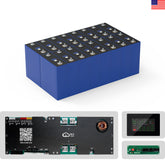

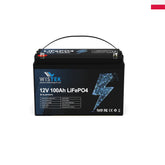
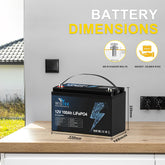
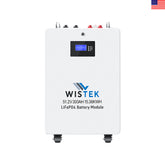
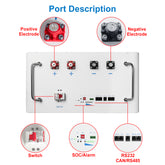
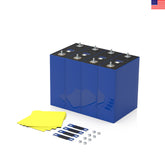
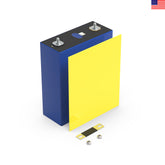
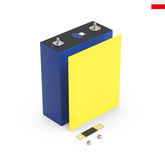

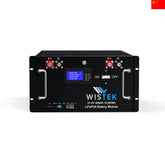
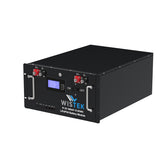
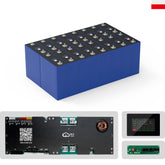








Leave a comment
All blog comments are checked prior to publishing